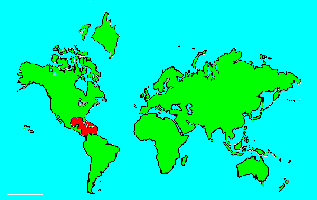SPECIES INFO
The Jamaica petrel (Pterodroma caribbaea) is now extinct. This petrel used to breed on Jamaica. When flying this petrel showed a solid brown coloration. Modern authors consider the Jamaica petrel was a dark form of the black capped petrel (Pterodroma hasitata).
Some authors consider Pterodroma caribbaea as critically endangered.Pterodroma genus of petrels contains about 34 species. However, two of the species have recognized sub species, and consequently there were 36 named lifeforms in this genus per Monroe in 1993. Clements in 2007 listed 34 species, but 7 of those species had subspecies. These petrels are found primarily in the warmer and tropical areas of the world. They reach their greatest species development in the Pacific Ocean. The members of the Pterodroma genus are frequently referred to as part of the gadfly petrels. These petrels have little seasonal variation in color or little variation in color by sex. However, several species are polymorphic. Although these petrels are capable of swimming underwater, they rarely do so per Gaston in 2004. Petrels generally have long narrow wings with a wing spread usually more than twice as broad as their length.
Shearwaters and petrels (Family Procellariidae) are medium-large sized birds that fly close to the water. There are 79 species in this family.
Tube Nosed Swimmers (Order Procellariiformes) contains three families of primarily marine birds. There are about 114 different species in this order. The albatrosses, shearwaters, storm petrels, and diving petrels are contained in this order.
Aves contains about 8,650 different species of living birds known to science. Each year about one new species is discovered in some remote rain forest or remote island. In addition, scientists have been raising many subspecies to full species status which may raise the species count to 10,000. Birdlife recognizes 10,027 species as of 2011.
However, each year about one species goes extinct. The rate of extinction is increasing, and the rate of new discovery is decreasing, so that the number of bird species will soon begin to decline rapidly. Although different taxonomists would organize the birds differently, there are approximately twenty-seven orders of birds. These orders are broken down into about one hundred and fifty-five different families.
Recent research of the genetic structure of some of the shore birds and owls would indicate that the present organization of orders and families should have some modification.
The birds are a worldwide group of animals that are characterized by having the front limbs modified into wings that are used for flying. Perhaps the most unique feature of the birds is the feathers. These feathers are made up of a central support called a quill and a series of small filaments that are hooked together as barbs.
For many years it was believed that Archaeopteryx discovered in Bavaria was the oldest bird from about 150 million years ago. However, in l986, Sankar Chattterjee, a Texas paleontologist, reportedly discovered a bird in the genus Protoavis that lived about 225 million years ago.
When this project was begun in 1978, we used Austin & Singer for bird taxonomy. Since then, we have adopted many changes, but have kept some older concepts that are still found widely in the literature. Recently, we have used Clements and Howard & Moore. Very recently, we have used Monroe and Sibley for the higher taxonomy of the perching birds.
Backboned Animals (Phylum Chordata) are the most advanced group of animals on earth. These animals are characterized by having a spinal cord or backbone. Most members have a clearly defined brain that controls the organism through a spinal cord. Fish, amphibians, reptiles, birds, and mammals are in this phylum.
Currently, some taxonomists believe that the fish should be divided into two groups (sharks and regular fishes) and that there are some other primitive groups in the phylum such as hagfish or lampreys.
Animal Kingdom contains numerous organisms that feed on other animals or plants. Included in the animal kingdom are the lower marine invertebrates such as sponges and corals, the jointed legged animals such as insects and spiders, and the backboned animals such as fish, amphibians, reptiles, birds, and mammals.

